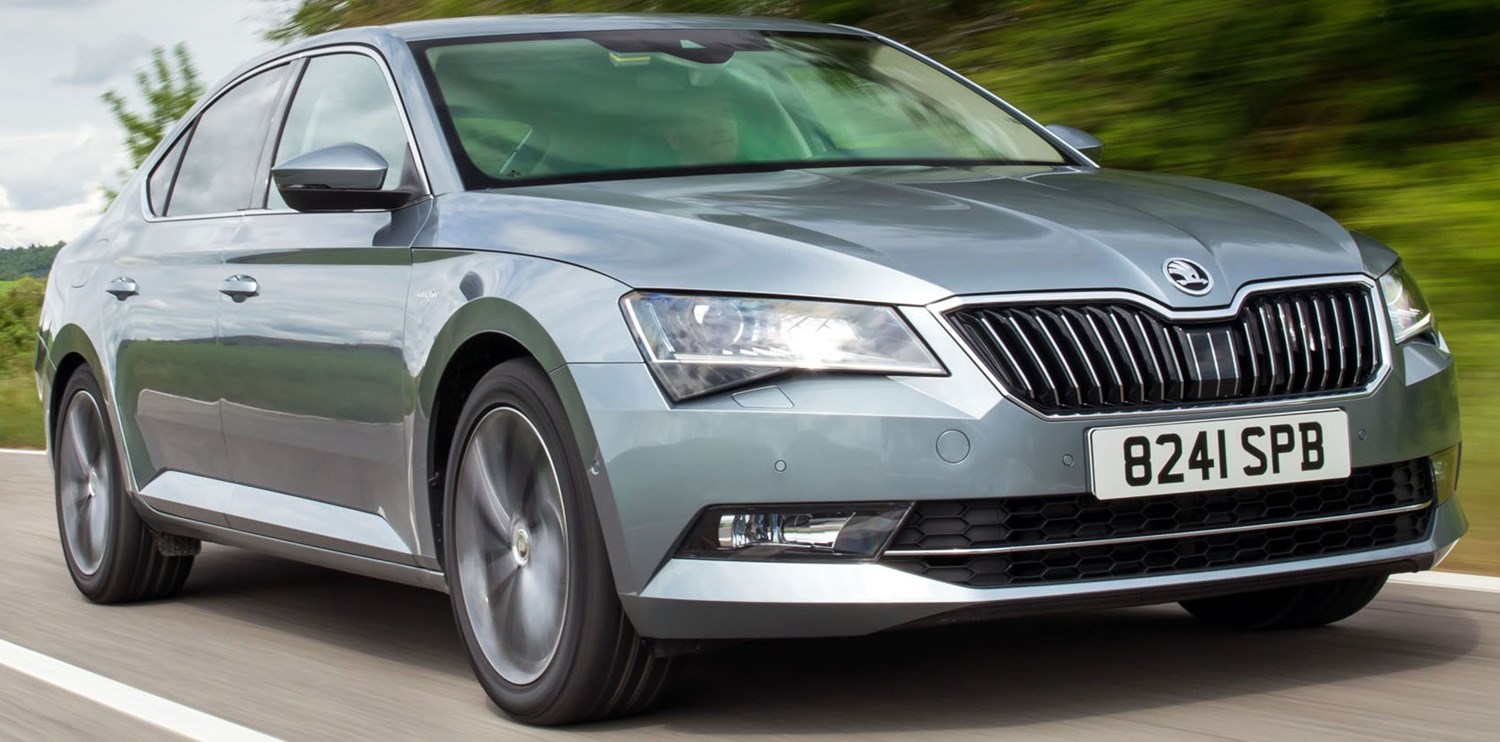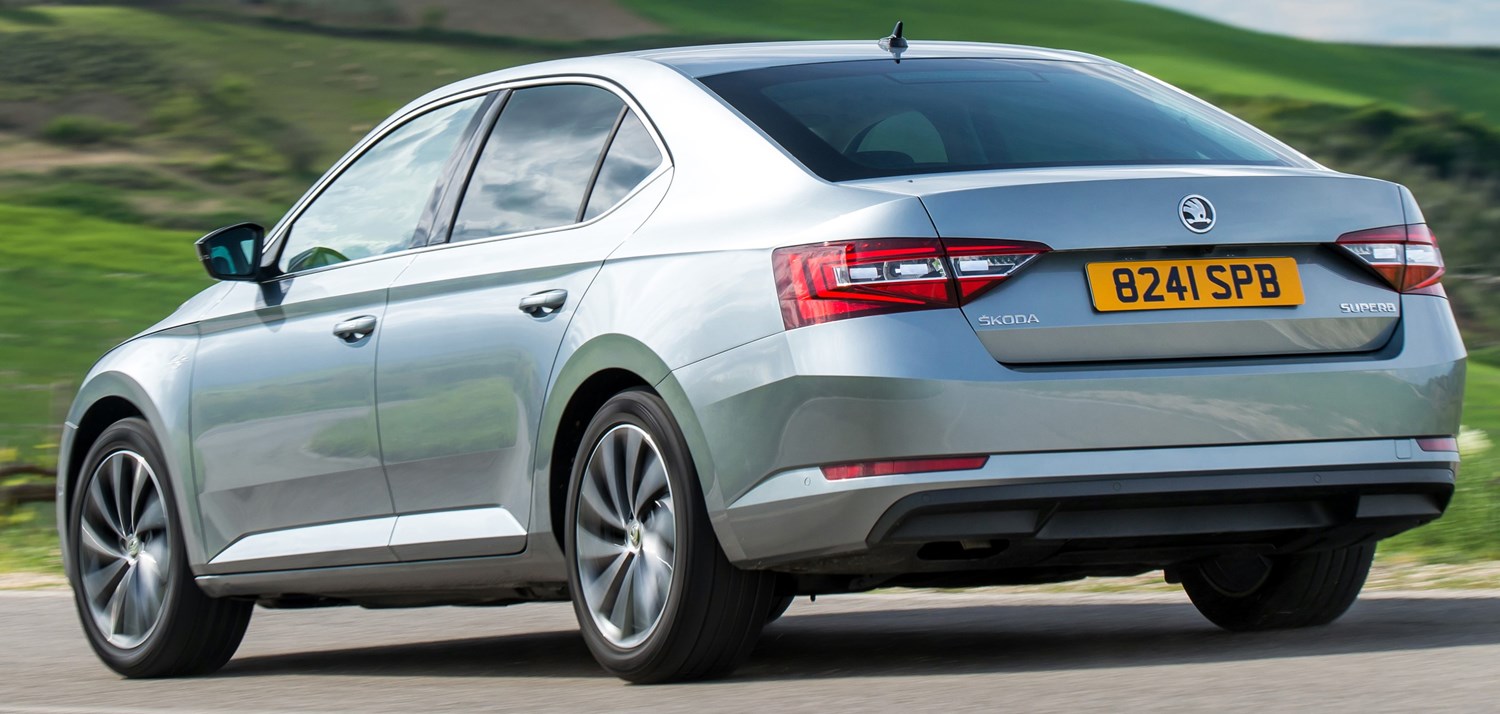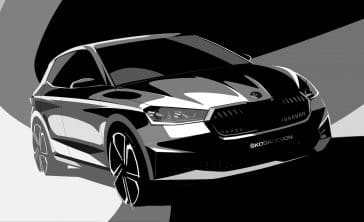Model Review
When the Skoda Superb first arrived, plenty scoffed at the ambitious name being used by a manufacturer that was, if we’re honest, considered a bit of a joke. Nobody is laughing now.
The first car was, in essence, a stretched version of the Volkswagen Passat, offering more practicality at a far less premium price point. In fact, the price was so low that the most expensive variant was £1,000 cheaper than the cheapest version of Jaguar’s premium D-segment saloon, the X-Type.
Although the car was well received by the motoring press, it took a few years before the Superb became widely considered a real contender by the general public.
Today, with the third-generation car on sale, the Superb now offers a thoroughly modern design, almost outrageous amounts of interior space and all the fit and finish we’ve come to expect from Volkswagen Group products.

Latest model
The third-generation Superb arrived on British shores in 2015, and was instantly a hit. It was arguably the Superb that came closest to living up to its name, with the only thing standing between it and greatness a lifeless and overly light steering rack.
It’s a good-looking beast, eschewing the rounded look of the old Superb and replacing it with an orgy of sharp angles and prominent creases. The interior is less exciting, but it’s functional and well put together, as well as being hugely spacious. The rear passenger space rivals that of a luxury limo, and the boot space is little short of cavernous.
Under the bonnet, there’s a range of four-cylinder engines producing between 118 and 276bhp, and varying degrees of economy. The fire-spitting 2.0-litre petrol probably won’t be the choice for those seeking the best environmental credentials, but the diesels are staggeringly parsimonious.
The diesels suit the car’s laid-back, comfortable road manners, which don’t really lend themselves to hard cornering, but offer a relaxed place to enjoy a long cross-country cruise. It soaks up the bumps unbelievably well, and the big, plush seats leave you backache-free even after long trips.
Value for money
The cheapest brand new Superb will set you back a very reasonable £19,945, and for that money you’ll get acres of space, alloy wheels and a touchscreen infotainment system.
Spending an extra £1,000 or so will upgrade to the roomier estate version, and top-of-the-range examples cost around £36,000.
You can pick cars up for far less, though, by delving into the used market. Prices start at less than £1,000 for a tatty first-generation car, but you can pick up decent ones for less than £2,000. Second-generation examples tend to cost a little more, but as the eldest of these are approaching 10 years old, you can still root out good ones at sensible prices.
You can get a few thousand pounds off the list price of a new one, too, by going for a pre-registered car, although this won’t give you the same warranty as a box-fresh model.
Looks and image
Although the original Superb looked much the same as the Passat that spawned it, the more modern cars have taken their own path.
Skoda will tell you that the modern Superb is designed to invoke the celebrated Czech crystal, with its range of sharp creases and defined lines, but whatever the inspiration, the Superb is simply a really good-looking car. No matter whether it’s found in estate or hatchback guise, it looks great from every angle.
Inside, it’s typical VW Group fare, with switchgear that will be familiar to owners of other products in the Skoda, Seat and Volkswagen stables, and the standard group infotainment system.
The cabin plastics, however, won’t quite live up to the standards we’ve come to expect from Volkswagen. The majority of the dash is made up of soft-touch materials, but there are one or two hard points in places you touch slightly less often, such as the lower door cards and the transmission tunnel.

Space and practicality
Skoda sells cars on the premise of value and practicality, and the Superb is arguably its best example of those facets. The standard hatchback costs just £19,785 and you get a massive 625 litres of boot space, not to mention S-Class-rivalling rear legroom. Upgrade to the cavernous estate version and that is upped to 660 litres.
Folding the back seats down is the key to true luggage space, though, freeing up an impressive 1,760 litres in the hatch and 1,950 in the estate.
Practicality doesn’t just mean space, however, and Skoda is well aware of this. As a result, the company will offer a Simply Clever collection of accessories, which includes a bin for the door pocket and an ice scraper stored in the fuel filler cap.
Engines
The Superb currently uses a range of four-cylinder engines that have seen various employment across the Volkswagen Group. The basic 1.4-litre petrol, for example, is also used in the VW Golf, while the high-powered 276bhp petrol engine was first seen in the Seat Leon Cupra.
The vast majority of Superbs, however, are likely to run on diesel. The basic 1.6-litre diesel unit is hugely efficient, returning more than 70mpg on the combined cycle and managing 60mpg without sweat in the real world.
However, the more powerful 2.0-litre engines are likely to be a little more popular. Although they don’t quite match the 1.6 for economy on paper, they will be almost as efficient on the road, with the pick of the range – the 148bhp unit – easily topping 60mpg on long runs.
As well as a choice of engines, customers are also spoilt for choice when it comes to transmissions. There are manual and automatic options, as well as a handful of derivatives with four-wheel drive.
Running costs
As you’d expect, the Superb is far from an expensive car to run. The most frugal diesel returns 76.4mpg, which should keep fuel costs down, and even the larger and more powerful 2.0-litre diesels will crack 50mpg without really trying.
The petrol engines will be a little thirstier – particularly the 2.0-litre 276bhp unit taken from the Seat Leon Cupra – but the more mainstream models shouldn’t have to visit the pumps too regularly.
Older variants with the 3.6-litre V6 petrol engine will have a real thirst for petrol, though, and although they might appeal with silky smoothness, they should be avoided by anyone who doesn’t want to become very familiar with staff at the local fuel station.
Because the Skoda badge doesn’t carry an especially premium image, insurance shouldn’t be too expensive, and the cost of getting work done shouldn’t be horrendous, either.

Things to look out for
The Superb’s reliability record is generally good, with few known faults specific to the model. The only thing really worth noting is that the 1.8-litre turbocharged petrol engine found in first-generation cars is prone to one or two issues with the ignition coil.
There are also quite a few examples that have led pretty hard lives, either as taxis or as company cars, so be wary of cars that have high mileages.
And, as ever, it’s well worth getting the car checked for outstanding finance and insurance write-offs before you buy, as well as obtaining an inspection from an independent mechanic. Get a car with a full service history, too.
Rivals
The Superb sits somewhere between the Mercedes-Benz C- and E-Class models in terms of size, and thus has little to compete with in terms of natural rivals.
In terms of price, it’s going toe-to-toe with the likes of the Ford Mondeo and Kia Optima, both of which are very competent, but lack the Superb’s incredible interior space.
Closer to home, the Superb gets some competition from its sibling, the VW Passat, and even from premium European models such as the Audi A4, Mercedes-Benz C-Class and BMW 3 Series. But though these cars are far more expensive than the Skoda, they still aren’t as capacious.
Depreciation warning
One of the many good things about cars with low asking prices is that they don’t generally depreciate that much. After all, there’s only so much lower the price can get! The Superb does hold its value fairly well, thanks to impressive build quality and reliability, but that doesn’t mean you can’t pick up a bargain used example if you shop around.
Of course, high-mileage first-generation cars are now selling for peanuts, but you can pick up a year-old model with a low odometer reading for a good couple of thousand pounds less than list price.
You should beware, though, that with cars like the Superb, going for the top-of-the-range variant might be a false economy. Very often, you won’t recoup much of the money you spent on upgrading when it comes to selling the car on.





